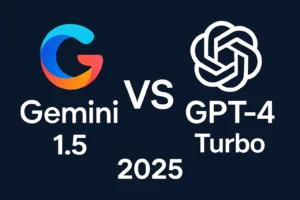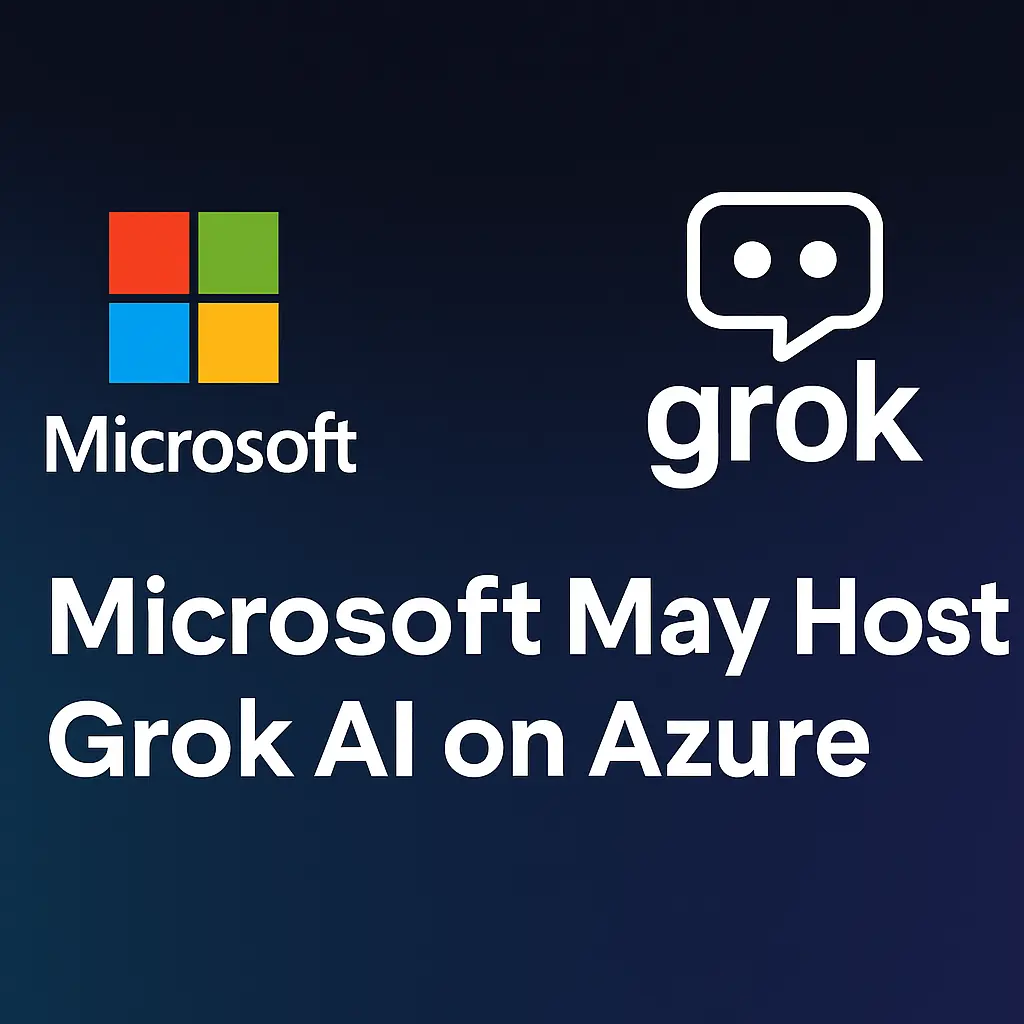
Gemini 1.5 vs. GPT-4 Turbo — Which AI Reigns Supreme in 2025?
Google’s Gemini 1.5 and OpenAI’s GPT-4 Turbo are shaping the future of AI. Here’s how they compare in reasoning, memory, code, and creativity.
Top 10 Trending Tags
in All Categories

Google’s Gemini 1.5 and OpenAI’s GPT-4 Turbo are shaping the future of AI. Here’s how they compare in reasoning, memory, code, and creativity.

The Lenovo Yoga Pro 9i Gen 8 combines RTX 4070 graphics, a brilliant Mini LED display, and AI-powered performance — perfect for creators and professionals on the move.
in All Categories

Google’s Gemini 1.5 and OpenAI’s GPT-4 Turbo are shaping the future of AI. Here’s how they compare in reasoning, memory, code, and creativity.

The Lenovo Yoga Pro 9i Gen 8 combines RTX 4070 graphics, a brilliant Mini LED display, and AI-powered performance — perfect for creators and professionals on the move.

📌
Microsoft is reportedly considering hosting Elon Musk’s Grok AI on Azure, signaling a major shift in its AI strategy. The potential deal could disrupt Microsoft’s exclusive alignment with OpenAI — and intensify the race to dominate cloud AI infrastructure.
According to The Verge , Microsoft is reportedly considering hosting Grok AI, Elon Musk’s artificial intelligence model, on its Azure cloud platform. This unexpected move could significantly impact Microsoft’s close partnership with OpenAI, which powers many Azure-based services with GPT-4 Turbo. As AI providers compete for dominance in infrastructure and model access, Grok’s entry into Azure may reshape the balance of power in cloud-based AI. Will this new alliance dilute OpenAI’s influence, or mark the beginning of a multi-model strategy for Microsoft?
In this article, we break down what Grok AI is, how it compares to OpenAI’s models, and what this potential partnership means for the future of enterprise AI.
Grok AI is an artificial intelligence chatbot developed by xAI, a company founded by Elon Musk. Unlike traditional AI assistants, Grok is designed with a more conversational, sometimes sarcastic tone, drawing on real-time data from X (formerly Twitter). Its goal is to create a more personalized and socially aware AI experience — making it distinct from ChatGPT and Claude.
Microsoft’s Azure AI Foundry already supports multiple open and proprietary models. Adding Grok would:
Expand Azure’s language model offerings
Position Microsoft as an AI-neutral infrastructure provider
Hedge against overreliance on OpenAI
Despite investing billions into OpenAI, Microsoft is clearly building the infrastructure to support a broad spectrum of AI tools — possibly even competing ones.
“We believe in supporting a diverse range of AI models — Grok could be a valuable addition to Azure.”
Microsoft Azure is not just a cloud platform — it’s one of the most influential ecosystems for AI development today. Hosting Grok on Azure could signal a strategic shift in Microsoft’s approach, moving from an exclusive reliance on OpenAI to a multi-model infrastructure. This change could benefit enterprise clients seeking diversity, flexibility, and alternative AI personalities beyond GPT-4.
While nothing is finalized, hosting Grok could raise eyebrows at OpenAI. If Microsoft becomes home to both Grok and GPT-4, the line between partner and platform begins to blur.
This also comes at a time when Elon Musk has openly criticized OpenAI, calling it “too closed” and “too aligned with corporate interests.” Hosting Grok may be a calculated signal that Microsoft is open to broader AI partnerships — or even future alternatives.
| Feature | Grok AI | GPT-4 Turbo |
|---|---|---|
| Developer | xAI (Elon Musk) | OpenAI |
| Hosting | X (Twitter) Premium+ / possibly Azure | OpenAI API, ChatGPT, Microsoft Copilot |
| Tone & Style | Sarcastic, edgy, real-time tone | Professional, versatile, instructional |
| Training Data | Includes X platform (real-time) | Web data + proprietary datasets (pre-2023) |
| Commercial Access | X Premium+ only | Available to businesses and developers |
If Microsoft proceeds with Grok integration, it may risk straining its deep relationship with OpenAI — or it may simply diversify its AI offerings in response to growing enterprise demand for model variety. This echoes a broader industry trend where companies like AWS and Google support multiple foundation models (e.g., Claude, Mistral, Gemini). Microsoft might be preparing to compete on model optionality — not just strength of individual partnerships.
For users, this could mean access to more expressive AI personalities, better tuned for informal or creative contexts. For developers, a Grok + Azure combo opens the door to building apps on a real-time, socially aware foundation model — especially useful for social media, news, and sentiment-driven applications.
Will Grok gain traction outside of X.com?
Can Azure support rival models without internal conflict?
How will OpenAI respond if the deal proceeds?
Either way, the AI landscape continues to evolve quickly — and Microsoft seems determined to stay at the center of it.
📊 Grok vs GPT-4 Turbo — Quick Stats
📅 Grok AI Development Timeline
The possibility of Microsoft hosting Grok AI on Azure is more than just a backend infrastructure decision — it’s a signal that the AI ecosystem is diversifying fast. With Microsoft juggling OpenAI’s GPT models and now potentially Grok, the lines between platform, partner, and competitor are beginning to blur.
If this deal moves forward, it could redefine how major tech companies collaborate and compete. For now, one thing is clear: the AI race is no longer just about the best model — it’s about who controls the ecosystem.
OpenAI remains a dominant force in the AI space — especially with GPT-4 Turbo’s superior reliability and tooling. But Grok’s potential Azure debut signals a new chapter. It suggests that even OpenAI’s biggest partner is preparing for a future where multiple AI models coexist and compete on their unique strengths. If Grok delivers, OpenAI may finally face its most serious rival — not just in performance, but in ecosystem support.
📨 Stay Ahead of the AI Curve
Be the first to know about Grok’s rollout on Azure, GPT-5 news, benchmark comparisons, and real-world performance tests.
Discussions are reportedly underway, but no official partnership has been confirmed yet. Microsoft is exploring options to expand its Azure AI model offerings.
Grok is built with a more informal, sarcastic tone and real-time access to X (Twitter) data. It's designed to be edgier and more personality-driven than GPT-4.
Not necessarily. Microsoft already supports other models like Mistral and Phi-2. However, adding Grok may create strategic complexity with OpenAI.
Grok is available via X Premium+ subscriptions on the X app (formerly Twitter). It’s currently integrated directly into the X interface.